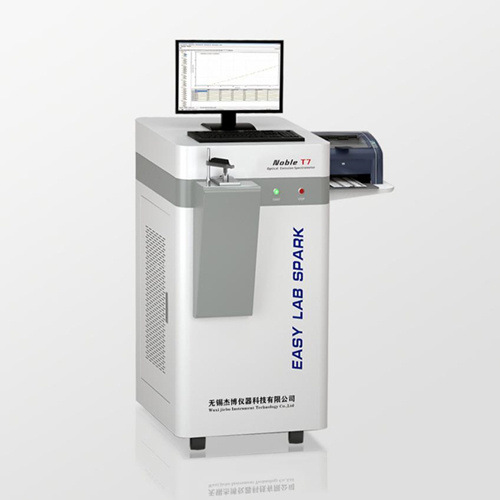Optical emssion spectrometer is a quantitative analysis with accurate measurement results, good repeatability and long-term stability. The handheld XRF spectrometer is a qualitative analysis used to identify the material grade. It is convenient for field testing, but it cannot measure the more demanding elements and carbon.
Optical emission spectrometer is the most sensitive and accurate detector in the field of solid metal material analysis. It can meet the complex requirements of metal spectrum analysis to the greatest extent. It can analyze materials: Fe, Al, Cu, Ni, Co, Ti, Zn, Mg, Pb , Sn and other substrates. When a metal is excited by energy, according to the theory of quantum mechanics, the shell electrons of the atom will be excited to the outer orbits of higher energy levels, which is in an unstable state. Under certain conditions, it will emit photons when it transitions from a high energy level to a low energy level, emitting characteristic spectral lines. Various elements have different characteristic spectral lines. These spectral lines are separated by an optical system, dispersed into a series of continuous spectra ordered by wavelength, and then the optical signal is directly converted into an electrical signal by a photoelectric conversion element. Finally, the computer measurement system can determine the percentage content of the element by calculating the intensity of the characteristic spectral line of the element.
Detection principle of handheld XRF spectrometer:
The handheld XRF spectrometer is a fast, non-destructive analysis of alloy materials. Application fields: aerospace, alloy smelting, petrochemical construction, pressure vessels, stainless steel manufacturing, waste metal recycling, petrochemicals, weld inspection, alloy sorting and other fields. The hand-held XRF spectrometer is mainly composed of an X-ray tube, a detector, a CPU, and a memory.The principle is that when a high-energy X-ray with an energy higher than the binding energy of the electrons inside the atom collides with the atom, an inner electron is expelled and a hole appears. Make the entire atomic system in an unstable state. When the outer electrons transition to the holes, a photoelectron is generated. The photons ejected may be absorbed again and expelled from another outer photoelectron in the outer layer. Auger occurs. Effect, also known as secondary photoelectric effect or no radiation effect. The ejected secondary photoelectrons are called Auger electrons. When the outer-layer electrons jump into the inner-layer holes and the energy released is not absorbed by the atoms, but is released in the form of photons, X-ray fluorescence is generated, whose energy is equal to the energy difference between the two energy levels. Therefore, the energy or wavelength of ray fluorescence is characteristic and has a one-to-one correspondence with the element. According to Moseley's law, as long as the wavelength of fluorescent X-rays is measured, the type of element can be known, which is the basis of qualitative analysis of fluorescent X-rays.
